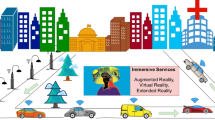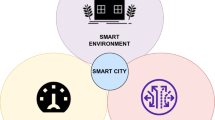Abstract
The investigation of sophisticated methods to maximize user-to-multiple access point (AP) associations has been spurred by the unwavering need for fast, dependable connectivity in Beyond 5G (B5G) networks. This paper proposed a novel approach for selecting optimal AP by combining state-of-the-art deep learning (DL) architectures such as Alex Net, ResNet50, and Darknet53 with an innovative hybrid optimization algorithm. The adaptive feature of the FOX-inspired optimization algorithm is combined with the efficiency of the standard Gazelle optimization algorithm in this study. Combining these two optimization strategies guarantees a balanced trade-off between exploration and exploitation, leading to selecting APs that optimize network performance while adjusting to changing environmental conditions. This strategy not only improves connectivity but also advances wireless network evolution, establishing the way for effective and flexible B5G communication systems. The optimization of user-to-multiple AP associations in B5G networks presents a comprehensive challenge that this research attempts to handle through the smooth integration of cutting-edge optimization methods with DL approaches.









Similar content being viewed by others
Availability of data and materials
No datasets were generated or analyzed during the current study.
References
Alsulami H, Serbaya SH, Abualsauod EH, Othman AM, Rizwan A, Jalali A (2022) A federated deep learning empowered resource management method to optimize 5G and 6G quality of services (QoS). Wirel Commun Mob Comput 2022(1):1352985
Taufique A, Rizwan A, Imran A, Arshad K, Zoha A, Abbasi QH, Imran MA (2019) Big data analytics for 5G networks: utilities, frameworks, challenges, and opportunities. Wiley 5G Ref: The Essential 5G Reference Online 1–38
Hassan SMHU, Brennan A, Muntean GM, McManis J (2024) NSM 2: network slice management and monitoring using machine learning for AR/VR applications. In: 2024 IEEE International Symposium on Broadband Multimedia Systems and Broadcasting (BMSB). IEEE, pp 1–7
Rizwan A, Priyanga P, Abualsauod EH, Zafrullah SN, Serbaya SH, Halifa A (2022) A machine learning approach for the detection of QRS complexes in electrocardiogram (ECG) using discrete wavelet transform (DWT) algorithm. Comput Intell Neurosci 2022(1):9023478
Shaabanzadeh SS, Sánchez-González J Contribution to the development of Wi-Fi networks through machine learning based prediction and classification techniques. https://grcm.tsc.upc.edu/en/theses/soheilathesisdeposit.pdf
Kaur J, Khan MA, Iftikhar M, Imran M, Haq QEU (2021) Machine learning techniques for 5G and beyond. IEEE Access 9:23472–23488
Zhao J, Vandenhove P, Xu P, Tao H, Wang L, Liu CH, Crowcroft J (2022) Parallel and memory-efficient distributed edge learning in B5G IoT networks. IEEE J Sel Topics Signal Process 17(1):222–233
Park J, Samarakoon S, Bennis M, Debbah M (2019) Wireless network intelligence at the edge. Proc IEEE 107(11):2204–2239
Rizwan A, Arshad K, Fioranelli F, Imran A, Imran MA (2018) Mobile internet activity estimation and analysis at high granularity: SVR model approach. In: 2018 IEEE 29th Annual International Symposium on Personal, Indoor and Mobile Radio Communications (PIMRC). IEEE, pp 1–7
Ye H, Liang L, Li GY (2022) Decentralized federated learning with unreliable communications. IEEE J Sel Topics Signal Process 16(3):487–500
Ahmad F, John MU, Khosroshahy MB, Sarmadi S, Bhat GM, Peer ZA, Wani SJ (2019) Performance evaluation of an ultra-high speed adder based on quantum-dot cellular automata. Int J Inf Technol 11:467–478
Elhoushy S, Hamouda W (2020) Performance of distributed massive MIMO and small-cell systems under hardware and channel impairments. IEEE Trans Veh Technol 69(8):8627–8642
Xue Q, Wei R, Ma S, Xu Y, Yan L, Fang X (2023) Multi-connectivity enabled user-centric association in ultra-dense mmWave communication networks. In: 2023 IEEE 97th Vehicular Technology Conference (VTC2023-Spring). IEEE, pp 1–6
Li X (2023) Design and analysis of decentralized user multi-association in ultra-dense mmWave network. Tennessee Technological University, Diss
Rizvi S (2023) Unveiling the potential of artificial intelligence and machine learning in the 5G network landscape: a comprehensive review. Asian J Res Comput Sci 16(4):23–31
Alsamhi SH, Afghah F, Sahal R, Hawbani A, Al-qaness MA, Lee B, Guizani M (2021) Green internet of things using UAVs in B5G networks: a review of applications and strategies. Ad Hoc Netw 117:102505
Dinh THL, Kaneko M, Wakao K, Kawamura K, Moriyama T, Abeysekera H, Takatori Y (2021) Distributed user-to-multiple access points association through deep learning for beyond 5G. Comput Netw 197:108258
Dinh THL (2022) Reinforcement learning-based methods for wireless access optimization and multi-interface connectivity. The Graduate University for Advanced Studies, Diss
Stalin S, Gupta M, Makanyadevi K, Agrawal A, Jain A, Pandit SV, Rizwan A (2023) Applying machine learning approach to identifying channels in MIMO networks for communications in 5G-enabled sustainable smart cities. Mobile Netw Appl 1–13. https://link.springer.com/article/10.1007/s11036-023-02213-8
Sufyan A, Khan KB, Khashan OA, Mir T, Mir U (2023) From 5G to beyond 5G: a comprehensive survey of wireless network evolution, challenges, and promising technologies. Electronics 12(10):2200
Dinh THL et al (2021) Distributed user-to-multiple access points association through deep learning for beyond 5G. Comput Netw 197:108258
Jain A, Lopez-Aguilera E, Demirkol I (2020) Are mobility management solutions ready for 5G and beyond? Comput Commun 161:50–75
Szott S, Kosek-Szott K, Gawłowicz P, Gómez JT, Bellalta B, Zubow A, Dressler F (2022) Wi-Fi meets ML: a survey on improving IEEE 80211 performance with machine learning. IEEE Commun Surv Tutor 24(3):1843–1893. https://ieeexplore.ieee.org/abstract/document/9786784
Zhao S (2023) Energy efficient resource allocation method for 5G access network based on reinforcement learning algorithm. Sustain Energy Technol Assess 56:103020
Ren P, Qiao X, Huang Y, Liu L, Pu C, Dustdar S, Chen J (2020) Edge AR X5: an edge-assisted multi-user collaborative framework for mobile web augmented reality in 5G and beyond. IEEE Trans Cloud Comput 10(4):2521–2537
Li X, Guo TN, Mackenzie AB (2022) Multi-agent reinforcement learning with measured difference reward for multi-association in ultra-dense mmWave network. IEEE Access 10:118747–118758
Wang Y, Feng G, Sun Y, Qin S, Liang YC (2020) Decentralized learning-based indoor interference mitigation for 5G-and-beyond systems. IEEE Trans Veh Technol 69(10):12124–12135
Jing T, Huang H, Gao Q, Wu Y, Huo Y, Wang Y (2023) Multi-user physical layer authentication based on CSI using ResNet in mobile IIoT. IEEE Trans Inf Forensics Secur
Cheng N, Wu S, Wang X, Yin Z, Li C, Chen W, Chen F (2023) AI-driven optimization techniques for enhancing connectivity in B5G IoT networks. IEEE Int Things J 10(1):123–135
Alghamdi A, Al Shahrani AM, AlYami SS, Khan IR, Sri PA, Dutta P, Rizwan A, Venkatareddy P (2024) Security and energy efficient cyber-physical systems using predictive modeling approaches in wireless sensor network. Wirel Netw 30(6):5851–5866
Nauman A, Jamshed MA, Qadri YA, Ali R, Kim SW (2021) Reliability optimization in narrowband device-to-device communication for 5G and beyond-5G networks. IEEE Access 9:157584–157596. https://doi.org/10.1109/access.2021.3129896
Panwar P, Shabaz M, Nazir S, Keshta I, Rizwan A, Sugumar R (2023) Generic edge computing system for optimization and computation offloading of unmanned aerial vehicle. Comput Electr Eng 109:108779
Nauman A, Jamshed MA, Ahmad Y, Saad M, Bilal M, Shanmuganathan V, Kim SW (2023) Injecting cognitive intelligence into beyond-5G networks: a MAC layer perspective. Comput Electr Eng 108:108717. https://doi.org/10.1016/j.compeleceng.2023.108717
Funding
This research does not receive any kind of funding in any form.
Author information
Authors and Affiliations
Contributions
S.A.N. wrote the main manuscript text and contributed to conceptualization, data curation, methodology, investigation, validation, software and prepared figures.
Corresponding author
Ethics declarations
Conflict of interest
The authors declare no competing interests.
Ethical approval
Not applicable.
Additional information
Publisher's Note
Springer Nature remains neutral with regard to jurisdictional claims in published maps and institutional affiliations.
Rights and permissions
Springer Nature or its licensor (e.g. a society or other partner) holds exclusive rights to this article under a publishing agreement with the author(s) or other rightsholder(s); author self-archiving of the accepted manuscript version of this article is solely governed by the terms of such publishing agreement and applicable law.
About this article
Cite this article
Nooh, S.A. Enhancing beyond 5G connectivity and security: optimizing user-to-multiple AP associations with hybrid deep learning and innovative optimization techniques. J Supercomput 81, 72 (2025). https://doi.org/10.1007/s11227-024-06503-0
Accepted:
Published:
DOI: https://doi.org/10.1007/s11227-024-06503-0




